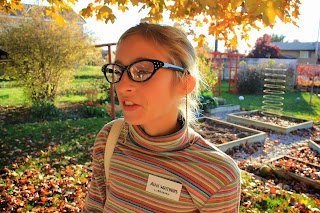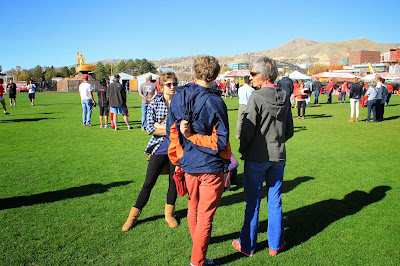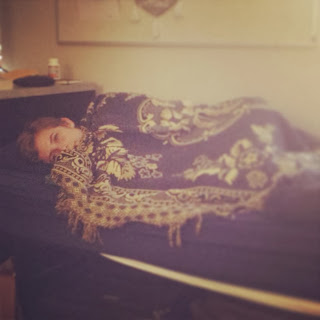Wednesday, November 21, 2001: Our friends the Astes have invited us up to Park City, to hang out at their friends' condo for the weekend. We have a pleasant drive up, anticipating. (Sharon's long-time best friend) Erin is already there. It’s pretty nice. We settle right in. Our kids and their kids haven't been together in a while, but they pick it back up perfectly. They go right to the jacuzzi, then play a ton of game boy, and a bunch of Catchphrase, and don’t watch too much TV, all things considered. The ladies labour over some pre-feast preparations. I'm happy to be on Claire detail. (Claire is four months old.) I have the best job, it turns out. We're back in the bedroom. I read a chapter or two, watch her doze off, come out for a bit of chatting and supervising, then back again.
Sharon tries to
put a load of dishes through and finds that there’s no hot water. Erin calls the maintenance man. He comes over, looks in, and has a
fit. “We don't own this unit! This is someone’s house!” It seems their paperwork, and the key that actually opened the door, are all wrong. We lug
everything one building over. The kids
moan scandalizedly—“the new TV’s smaller!”—but there are expressions on their
faces, and animated conversations, that suggest that this will be the
weekend’s best incident.
Thursday, November 22: What a nice day! Matt (3) wonders why he woke up in a different place than the one he actually fell asleep in. Snow is falling, and the Jacuzzi starts a-bubbling. While large people talk and play scrabble and prepare food, the kids stay out there, three, five hours at a time. They all do very nicely. Several of them go Finnish, and run howling into the mounting snows to roll around like loonies. Even Drew (10) gives it a try. Sarah (8) streaks over a hill and right out of sight.
Jacuzzing: http://abouthomemovies.org/2012/07/19/hot-tub/
Dinner’s nice,
though we’re awfully short on potatoes!
Another round of Catchphrase follows.
Sarah rules! “What’s the opposite
of heaven?” Much inappropriate TV gets
watched. I take Claire back to the
reading room. Spence (5) and Matt just walk
up and down the hall with an umbrella that they imagine into a walking stick. Sharon and Caitlin
clean up. Drew and Sarah play on that Game Boy. No harm was done,
seemingly. It's Matt's turn to say the prayer. “Thanks for the night, so we can play ghost
in the graveyard and go hide and seek.”
Friday, November 23: Lots
of snow. Breakfast by Steve. The kids play scrabble. Erin gets up very late. “What’s a’ matter, Erin?” asks Steve. “Did you have to go to the bathroom?” Time passed lightly and slowly. Good times.
We hit weather on the way home, but all is harmoniouis, or the boys fall
asleep, and we arrive in one piece.
It’s a cloudy
winter afternoon. The girls go to Harry
Potter (I) with the Swensons (cousins from California). I give Claire
a bottle, put a long movie on for the lads, and drop heavily off before the
warm air. Whoo! Everyone comes back. Drew is outraged at how poor the movie
was. We have a round of Boggle,
and then it's bedtime. The Swensons come back for a
late visit. Claire smiles and
smiles.
Sunday, November 25: The snow continues. This is always exciting. The Swensons come to church with us. After they get a picture taken in the back yard. Snowballs start flying. Philip hits Caitlin in the ear, then Matt in
the chest. Matt's brows turn
thunderous., “Guys! Stop that!” Later a bit of tension boils up. It is amazingly
diffused by a couple of home movies. Thank goodness for our archives!






















































